CLASSIC QUILT BLOCKS 849 Inspiring Designs Susan Winter Mills DOVER PUBLICATIONS, INC. Mineola, New York For my AllieCopyright Copyright 1980, 1989 by Susan Winter Mills All rights reserved. Bibliographical Note This Dover edition, first published in 1989 and reissued in 2016, is an enlarged and corrected republication of Illustrated Index to Traditional American Quilt Patterns, first published by Arco Publishing, Inc., New York, in 1980 and reprinted in 1981. The Appendix, Index to Appendix, and Foreword to the Enlarged Edition were prepared specially for the 1989 Dover edition. The 1989 Dover edition was published under the title and subtitle 849 Traditional Patchwork Patterns: A Pictorial Handbook.Library of Congress Cataloging-in-Publication Data Mills, Susan Winter. p. cm. cm.
DOVER PUBLICATIONS, INC. Mineola, New York For my AllieCopyright Copyright 1980, 1989 by Susan Winter Mills All rights reserved. Bibliographical Note This Dover edition, first published in 1989 and reissued in 2016, is an enlarged and corrected republication of Illustrated Index to Traditional American Quilt Patterns, first published by Arco Publishing, Inc., New York, in 1980 and reprinted in 1981. The Appendix, Index to Appendix, and Foreword to the Enlarged Edition were prepared specially for the 1989 Dover edition. The 1989 Dover edition was published under the title and subtitle 849 Traditional Patchwork Patterns: A Pictorial Handbook.Library of Congress Cataloging-in-Publication Data Mills, Susan Winter. p. cm. cm.
An enlarged and corrected republication of Illustrated index to traditional American quilt patterns, first published by Arco Publishing, Inc., New York, in 1980T.p. verso. Bibliography: p. Includes index. ISBN-13: 978-0-486-26003-7 ISBN-10: 0-486-26003-8 1. 2. 2.
PatchworkUnited StatesPatterns. I. Mills, Susan Winter. Illustrated index to traditional American quilt patterns. II.
| TT835.M53 1989 |
| 746.46041dc19 | 89-30044 |
Manufactured in the United States 26003809 2016 www.doverpublications.com
ContentsForeword to the Enlarged Edition When this book first appeared, I was aware that there were probably many quilt patterns and names that I had not included.
| TT835.M53 1989 |
| 746.46041dc19 | 89-30044 |
Manufactured in the United States 26003809 2016 www.doverpublications.com
ContentsForeword to the Enlarged Edition When this book first appeared, I was aware that there were probably many quilt patterns and names that I had not included.
Since then, I have continued to research and collect patchwork patterns, and, for this new edition, I have added an Appendix containing 139 new patterns. Some of these are variations of patterns that appeared originally. In these cases, the version appearing in the original edition is considered Variation 1, even though it is not labeled as such, and the new pattern is Variation 2. (For patterns that already had several variations in the original book, the numbering continues where it left off.) A separate index for the Appendix is included. Even now, I know that my research is far from complete. Foreword to the Original Edition Favorite of the Peruvians, Wind Power of the Osages, Chinese 10,000 Perfections, Pure Symbol of the Right Doctrine, Battle Ax of Thor, Catch Me If You Can, Hearts Seal, Mound Buildersall names for one quilt pattern; scraps of folk poetry for the pieced-work folk art that, nurtured by necessity, flourished in pre-industrial America. Foreword to the Original Edition Favorite of the Peruvians, Wind Power of the Osages, Chinese 10,000 Perfections, Pure Symbol of the Right Doctrine, Battle Ax of Thor, Catch Me If You Can, Hearts Seal, Mound Buildersall names for one quilt pattern; scraps of folk poetry for the pieced-work folk art that, nurtured by necessity, flourished in pre-industrial America.
Quiltmakers were prodigiously inventive710 quilt designs are compiled herein. They showed a remarkable sense of design and an intuitive grasp of geometries. As many of the more popular designs spread with the settling of the nation and were repropagated in new soil, they sprang up with new names; the homogenization of language by national media was still far down the road. My intention when I began compiling patterns was to piece together a reference tool for my own quiltmakingsomething to thumb through, like a catalog, a method more conducive to inspiration than going through many books. At first, the name for each pattern was just thata name. After poring through the sources and finding the same pattern with different names, their profusion and poetry caught my attention.
As I go through the pages now, the names delight me as much as the patterns. Quilts warmed the Bible Belt: Tents of Armageddon, Jobs Tears, Garden of Eden, Ecclesiastical. Some names are memorials to the birth of the nation and history in the making: Burgoyne Surrounded, Underground Railroad, Shermans March, Trail of the Covered Wagon, and Free Trade Block. More mundane events were part of the naming. We can imagine a quiltmaker coming up with Climbing Rose after a satisfying day in the garden, or an accident in the kitchen resulting in Broken Dishes. Individuals were honored in the naming, too: Martha Washington Star, Barbara Frietchie Star, Lincolns Platform, and Tippecanoe and Tyler Too.
Many whimsical names were evoked by the patterns: Ducks Foot in the Mud, Pickle Dish, Drunkards Path, and Wild Goose Chase. Sisters Choice, Grannys Garden, Aunt Elizas Star, Mothers Fancy Star, and Baby Bunting all reflect the importance of family; Always Friends, Nextdoor Neighbor, and Friendship Chain echo the warmth of companionship. To put a practical face on it, collecting as many names as possible is the only sensible way to index patterns that may be known by different names in adjacent counties. In laying out the book, it was necessary to choose one main name for each pattern as they were arranged in sections, with secondary names for the pattern listed below the primary name. All names are included in the index to facilitate a pattern search by the reader. (Some patterns were difficult to classifythey could easily have fallen as well into one classification as anotherso I clenched my teeth and surrendered to pure arbitrariness.) After deciding what shapetriangle, square, circle, star, or combinationis predominant in your quilt, you need only thumb through that section until you recognize the pattern. (Some patterns were difficult to classifythey could easily have fallen as well into one classification as anotherso I clenched my teeth and surrendered to pure arbitrariness.) After deciding what shapetriangle, square, circle, star, or combinationis predominant in your quilt, you need only thumb through that section until you recognize the pattern.
Since quilt patterns depend on the juxtaposition of light and dark fabric to bring out the design, the illustrations in this book are rendered in black and white. A quiltmaker can find a pattern he or she likes, count the shades therein, assign corresponding shades of fabric, and be assured that the quilt he makes will be a faithful rendering of the pattern. With many patterns, using different color schemes can cause a subject-field shift or otherwise completely change the aspect of the quilt, making it hard to apprehend how it is put together. Like a blueprint, renderings of patterns in black and white bring up the details relevant to construction. The patterns were drafted on a five-to-an-inch grid. Overlaying patterns with tracing paper with the same grid provides a unit measure for the pattern.
Dividing the projected dimensions of the quilt by the number of units will indicate the size of individual blocks and pieces of the block. Templates can then be cut to the appropriate sizes and used to trace the pieces on fabric. I cut about inch beyond and stitch on top of the traced line. Because of their strong graphic sense, quilt patterns may be adapted for use in many areas of arts and crafts. (Z-Cross contains four figures identical to the NBC-TV logo.) Designs can also be utilized in other textile crafts such as weaving, needlepoint, and embroidery. After I sent these patterns to the publisher, an article I wrote for my hometown paper prompted a letter from a reader with a query about and sketches of two patterns.
Next page
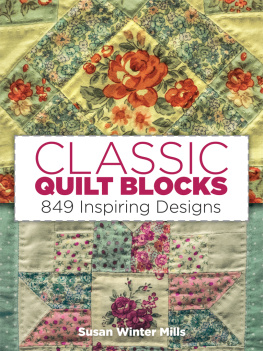
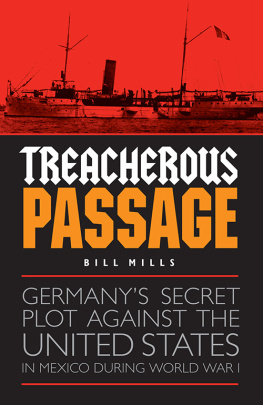


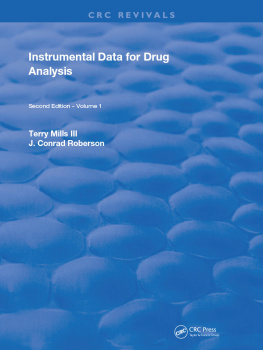



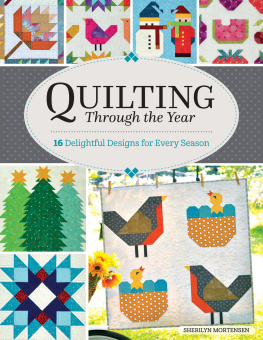

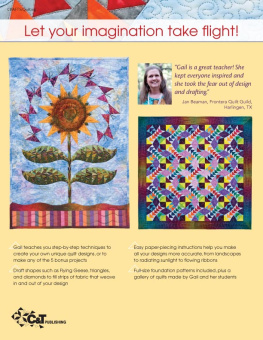
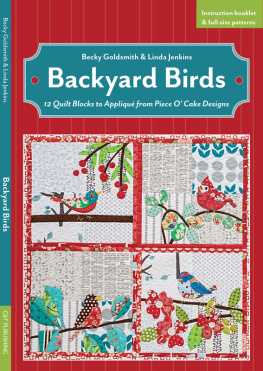
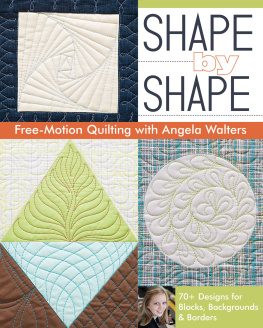
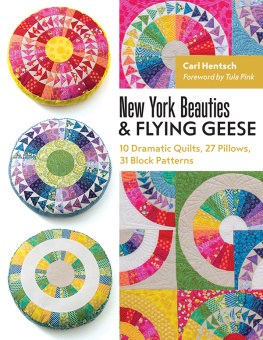
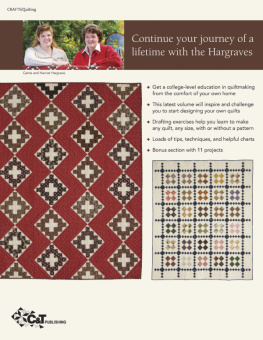
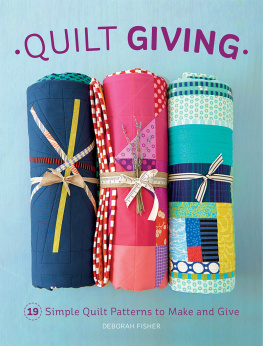

 DOVER PUBLICATIONS, INC. Mineola, New York For my AllieCopyright Copyright 1980, 1989 by Susan Winter Mills All rights reserved. Bibliographical Note This Dover edition, first published in 1989 and reissued in 2016, is an enlarged and corrected republication of Illustrated Index to Traditional American Quilt Patterns, first published by Arco Publishing, Inc., New York, in 1980 and reprinted in 1981. The Appendix, Index to Appendix, and Foreword to the Enlarged Edition were prepared specially for the 1989 Dover edition. The 1989 Dover edition was published under the title and subtitle 849 Traditional Patchwork Patterns: A Pictorial Handbook.Library of Congress Cataloging-in-Publication Data Mills, Susan Winter. p. cm. cm.
DOVER PUBLICATIONS, INC. Mineola, New York For my AllieCopyright Copyright 1980, 1989 by Susan Winter Mills All rights reserved. Bibliographical Note This Dover edition, first published in 1989 and reissued in 2016, is an enlarged and corrected republication of Illustrated Index to Traditional American Quilt Patterns, first published by Arco Publishing, Inc., New York, in 1980 and reprinted in 1981. The Appendix, Index to Appendix, and Foreword to the Enlarged Edition were prepared specially for the 1989 Dover edition. The 1989 Dover edition was published under the title and subtitle 849 Traditional Patchwork Patterns: A Pictorial Handbook.Library of Congress Cataloging-in-Publication Data Mills, Susan Winter. p. cm. cm.